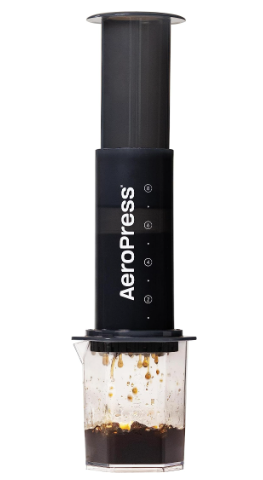What Happens to Spent Coffee Grounds? Sustainability Tips You Didn’t Know
BLOG NEWS
10/7/20254 min read


Introduction to Spent Coffee Grounds
Spent coffee grounds are the remnants left after brewing coffee, comprised of the soluble and insoluble organic materials that are washed away during the extraction process. As millions of coffee enthusiasts worldwide engage in this daily ritual, an astonishing volume of spent coffee grounds emerges; estimates suggest that up to 10 million tons of coffee waste are generated annually. This significant quantity poses a challenge for waste management systems and raises questions regarding sustainability practices within the coffee industry.
The journey of spent coffee grounds begins with the collection of coffee beans, which are then roasted and brewed. During brewing, hot water extracts flavors, oils, and other soluble compounds from the coffee grounds, leaving behind a drier, fibrous residue. Instead of being disposed of in landfills, where organic matter can contribute to greenhouse gas emissions as it decomposes, it is crucial to rethink how we can utilize these grounds in a more sustainable way.
Considering sustainability in relation to coffee consumption entails recognizing that every part of the coffee lifecycle can be optimized for environmental benefit. Understanding the potential uses for spent coffee grounds can help mitigate their disposal impact and promote a circular economy within the coffee sector. Repurposing spent coffee grounds involves exploring various applications, ranging from composting and fertilization to innovative products in beauty and wellness. Ultimately, this approach not only reduces waste but also enriches the environment and contributes to an overall reduction in the carbon footprint associated with coffee consumption.
In fostering a culture of sustainability, it is essential for coffee consumers, producers, and stakeholders alike to recognize the inherent value in spent coffee grounds and take proactive measures to repurpose them effectively. Through informed practices and innovative solutions, we can transform this waste problem into an opportunity for ecological advancement.
Common Uses for Spent Coffee Grounds
Spent coffee grounds, often seen as waste in households, can actually serve a multitude of practical and creative applications. One of the most common uses for coffee grounds is composting. By adding spent coffee grounds to your compost pile, you elevate the nitrogen content of the compost. This contributes to the overall health of the soil, helping to cultivate richer and more nutritious plants. Additionally, coffee grounds break down easily, providing a natural and beneficial ingredient for home gardens.
In the realm of personal care, coffee grounds have gained popularity as an exfoliant in various beauty products. When mixed with a natural oil or lotion, they create an effective scrub that aids in removing dead skin cells, promoting smoother and softer skin. This natural exfoliant is also rich in antioxidants, making it a popular choice for those looking to enhance their skincare routine without the use of synthetic chemicals.
Another practical use for spent coffee grounds is as a natural deodorizer. The absorbent nature of coffee grounds can help neutralize odors in your home. Placing bowls of dried coffee grounds in the refrigerator or other musty areas can reduce unpleasant smells. Moreover, they can be utilized for scrubbing surfaces in the kitchen, effectively cleaning while also providing a pleasant scent.
Furthermore, the artistic potential of spent coffee grounds is worth exploring. One innovative project involves using coffee grounds to create eco-friendly candles. By mixing melted wax with spent coffee grounds, individuals can produce unique and sustainable candles that not only serve as decorative items but also release a delightful aroma when burned. This creative endeavor encourages a sustainable mindset, transforming what was once discarded into a valuable product.
Environmental Benefits of Recycling Coffee Grounds
The environmental impact of recycling spent coffee grounds extends far beyond the disposal of waste. Every year, millions of pounds of coffee grounds are produced globally, contributing significantly to landfill waste. By repurposing these grounds, we can greatly minimize this waste. Statistics indicate that recycling just one ton of coffee grounds can prevent approximately 1.1 tons of carbon dioxide emissions from entering the atmosphere. This reduction is crucial in mitigating climate change effects, as methane—a potent greenhouse gas—is released when organic matter decomposes in landfills.
Moreover, recycling coffee grounds can play a vital role in enhancing soil health. When integrated into gardens or landscaping, coffee grounds serve as an excellent natural fertilizer. They are rich in nitrogen, phosphorus, and potassium, essential nutrients that promote plant growth. By amending soil with coffee grounds, gardeners can improve soil structure, retain moisture, and increase microbial activity, ultimately leading to healthier plants. Reports suggest that adding just 20% coffee grounds to compost can significantly boost its nutrient content, helping create a flourishing ecosystem in sustainable gardening practices.
Small, individual actions can lead to the collective improvement of our environment. Incorporating coffee grounds into daily habits is a practical and impactful way to contribute to sustainability. For instance, using spent coffee grounds as an organic pest repellent, deodorizer, or even in homemade beauty treatments helps reduce waste while benefiting people in various ways. As more individuals recognize the advantages of recycling coffee grounds, this sustainable practice can diminish the footprint of coffee consumption and inspire further environmentally-friendly habits.
In summary, recycling spent coffee grounds presents multiple environmental benefits, from reducing landfill waste and minimizing greenhouse gas emissions to enriching soil health. By understanding and embracing these advantages, individuals can actively participate in creating a more sustainable future.
Sustainability Tips for the Everyday Coffee Drinker
With growing awareness of sustainability, coffee drinkers can adopt various practical habits that contribute to environmental protection. A primary step is to choose sustainably sourced coffee. Look for certifications such as Fair Trade, Rainforest Alliance, or USDA Organic, which ensure that the farmers receive fair wages and that cultivation practices do not harm the environment. This conscious decision not only supports ethical farming practices but also enhances the overall quality of the coffee.
Another essential tip is to opt for reusable coffee filters. Traditional paper filters contribute to waste, while reusable metal or cloth filters significantly reduce the environmental footprint. Moreover, they often enhance the flavor of the coffee by allowing more oils and fine particles to pass through, resulting in a richer beverage. Incorporating these filters into your routine is simple and can make a notable difference in reducing waste.
Proper disposal or recycling of used coffee grounds is also crucial. Instead of throwing them away, consider reusing them in various ways. Used coffee grounds can serve as an excellent natural fertilizer for home gardens, rich in nitrogen and other essential minerals. They can also be applied as deodorants in refrigerators or as scrubs in personal care routines, taking advantage of their abrasive texture. Sharing this information with friends and family further amplifies the impact of these sustainable practices.
Lastly, integrating these tips into daily routines is important for creating lasting change. For instance, designate a spot in the kitchen for storing used coffee grounds before deciding on their reuse. This small act can prompt mindfulness about sustainability in coffee consumption. Ultimately, by making informed choices and adopting eco-friendly practices, coffee drinkers can significantly contribute to a more sustainable world.
One of our most eco-friendly coffee makers..
AeroPressXL Coffee press


Click 'Shop Now!' to find on Amazon now....
Specs
The AeroPress XL is an upsized version of the original AeroPress coffee maker, designed to brew larger volumes while maintaining the core benefits of its unique immersion and pressure-based method. It holds about 20 fluid ounces (around 590 ml), allowing users to make up to two full cups of coffee or several espresso-style shots in one press. The device is made from BPA-free plastic, and it comes with a shatterproof Tritan carafe designed to handle the increased brew size. Its dimensions are roughly 4 inches in diameter by 10 inches tall, making it significantly larger than the standard model. The brewing method combines immersion, aeration, and micro-filtration, delivering a smooth, low-acidity cup of coffee. The kit includes 100 XL-specific micro filters, a scoop, stirrer, and the custom carafe.
Pros and Cons
Pros
One of the biggest advantages of the AeroPress XL is its increased capacity. If you’re someone who often makes coffee for two or more people, or simply wants more in one go, this model saves time and effort compared to repeating brews with the original. It still delivers a clean, rich cup thanks to its fine paper filters and pressure-based brewing. The unit is lightweight yet durable, making it suitable for home or travel, and cleaning is straightforward—grounds eject cleanly and parts rinse off easily. You also retain control over brew time, temperature, and grind size, which makes it great for dialing in your personal taste preferences.
Cons
However, its larger size does come with drawbacks. The brewer is taller and bulkier, which may not suit small kitchens or tight travel setups. It also uses different filters than the original AeroPress, meaning you can’t interchange accessories or use third-party options built for the standard model. Handling the increased hot water volume requires more care, especially when pressing, as the unit can become top-heavy and harder to stabilize. The included carafe, while functional, lacks a handle, making pouring less ergonomic, particularly when it's full. Also, the overall design may feel less portable than what AeroPress fans are used to.
Our Review
The AeroPress XL successfully brings the beloved brewing qualities of the original to a larger format, and it does so without compromising on taste. We found the coffee produced to be consistently smooth, aromatic, and free of the bitterness or grit you might get with French press or other manual methods. The extra capacity makes it ideal for households, office use, or anyone who wants more than just a single cup. It still brews fast, with most cups done in under two minutes, and the cleanup remains one of the easiest among manual brewers.
That said, the bigger size changes the user experience slightly. It takes more counter space, the plunger needs firmer pressure to push through more liquid, and you have to be a bit more cautious with setup—especially if you use the inverted method. The separate filter size also means you'll need to plan for ongoing supply. And while the carafe is a nice inclusion, its lack of handle makes pouring awkward, especially with hot liquids.
In short, the AeroPress XL is a great step up for regular AeroPress users who want more coffee per press without sacrificing the quality and convenience they've come to expect. But for solo coffee drinkers or frequent travelers, the original model or AeroPress Go may still be the better fit.
